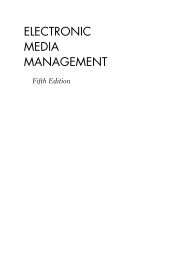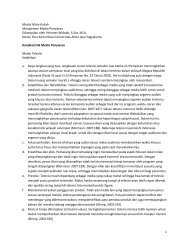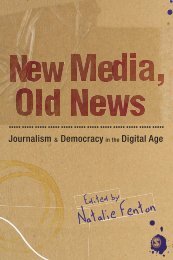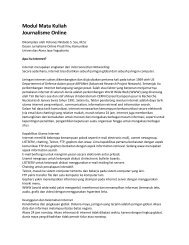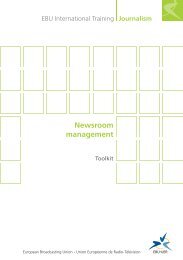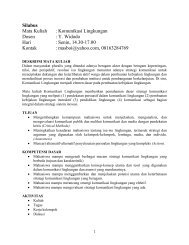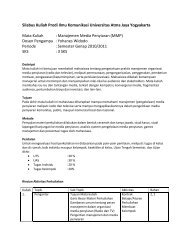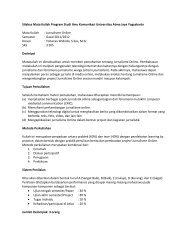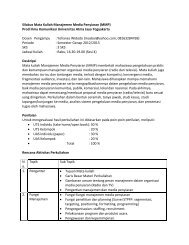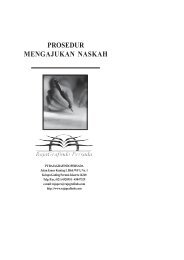Online Journalism - Ayo Menulis FISIP UAJY
Online Journalism - Ayo Menulis FISIP UAJY
Online Journalism - Ayo Menulis FISIP UAJY
Create successful ePaper yourself
Turn your PDF publications into a flip-book with our unique Google optimized e-Paper software.
36 <strong>Online</strong> <strong>Journalism</strong><br />
sites. What is clear is that online consumers still tend to take their<br />
news from a range of media and forms. More than 40 per cent of the<br />
Pew Center’s respondents indicated that they use the Internet to give<br />
them more background and depth on stories that they have first<br />
become aware of in the press or from broadcast news. This is now<br />
changing as consumers keep a portal or aggregator page on their<br />
screens keeping them informed of breaking news as they work. The<br />
smaller online audiences prior to 1996 tended to come from social<br />
groups which were more likely to be interested in news anyway and<br />
indeed, even in 1998, Pew discovered that online consumers were<br />
more likely to take a daily newspaper than the national average.<br />
In America the broadcast news corporations websites are more<br />
popular than newspaper sites. While Pew does not consider the<br />
European situation, the same preference holds for the BBC News<br />
<strong>Online</strong> site in the UK. In the US the preference is explained by the<br />
fact that broadcast news sites attract national audiences and, historically,<br />
there are no national newspapers in North America. Most<br />
online newspaper sites attract a predominantly regional or even local<br />
readership. In the period between 1996 and 1998 the MSNBC website<br />
experienced the greatest increase in traffic, probably growing at<br />
about the same rate as traffic on BBC News <strong>Online</strong>.<br />
The 1998 Pew survey suggests that nearly half of online news<br />
consumers felt that news organisations on the web were as accurate<br />
as more traditional media and were more likely to give the larger<br />
picture. At the same time, fewer web users considered news as a<br />
priority in their list of demands. Probably the key finding of Pew in<br />
1998 was that the audience of the web was a mass audience, no<br />
longer with a predominance of college-trained, more affluent,<br />
perhaps even male, consumers. The newer web users came from<br />
socio-economic groups which were traditionally heavier-thanaverage<br />
television watchers and from a younger constituency than<br />
earlier users. Both of these groups hitherto relied primarily on TV<br />
rather than the press for their news and tended to be more interested<br />
in the headlines than in documentary and comment.<br />
Conclusion<br />
In 1997 James Fallows, the executive editor of US News & World<br />
Report, contemplated the qualities of news and journalism on the<br />
Internet with John McChesney of Hotwired.



